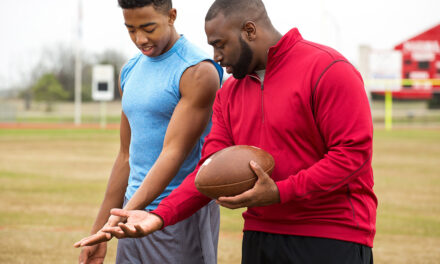Being prepared for emergencies is not just a best practice—it’s a necessity. From dealing with severe weather to managing unexpected injuries on the field, Athletic Directors must have comprehensive emergency plans in place to ensure the safety of everyone involved. Consider the following guide on what to look out for when preparing emergency plans for school sporting events.
Establishing Strong Emergency Plans
An effective emergency plan is built on proactive preparation, clear communication, and instinctive execution. Identify potential risks and develop protocols to address them before they escalate into crises.
Key Components to Consider:
- Risk Assessment: Identify and assess the potential risks specific to each sport and event. Consider unforeseen factors like weather conditions, the physical demands of the sport, and the specific vulnerabilities of participants, such as age or pre-existing medical conditions. Regularly review and update your emergency plan to account for new risks, changes in event logistics, or updates in safety protocols.
- Emergency Personnel: Designate trained personnel, such as athletic trainers, EMTs, or first responders, who can be present at each event. Ensure that they are equipped with the necessary tools and have access to the emergency plan.
- Communication Protocols: Establish clear lines of communication for reporting emergencies. Ensure that all staff, coaches, parents, students, and event volunteers are familiar with the communication process and know how to contact emergency services quickly.
- Evacuation Routes and Safe Zones: Map out evacuation routes and designate safe zones for severe weather events or other emergencies. Make these routes and zones known to all participants and spectators.
- First Aid Stations: Set up easily accessible first aid stations stocked with supplies to handle common sports injuries and medical emergencies. Ensure that these stations are manned by trained personnel.
Handling Medical Emergencies: Heat Exhaustion
One of the most common and most dangerous medical emergencies during sports events, particularly in warm weather, is heat exhaustion. Quick recognition and response can prevent this condition from progressing to heatstroke, a life-threatening situation.
Steps to Manage Heat Exhaustion:
- Recognize the Symptoms: Athletes suffering from heat exhaustion may exhibit symptoms such as heavy sweating, weakness, dizziness, nausea, and a rapid pulse. Early identification is key.
- Immediate Action: Move the affected athlete to a cooler, shaded area. Have them sit or lie down and loosen or remove any heavy clothing. If symptoms worsen or do not improve quickly, seek immediate medical attention.
- Hydration: Provide cool water or an electrolyte drink to help rehydrate the athlete. Encourage small sips rather than large gulps to prevent nausea.
- Cooling Measures: Use cold, wet towels on the athlete’s skin, or if available, place them in an ice bath to lower their body temperature. Apply cold packs to the neck, armpits, and groin.
- Prevention: Educate athletes and coaches on the importance of staying hydrated and recognizing early signs of heat-related illnesses.
Severe Weather: Ensuring Safety in Unpredictable Conditions
Severe weather can strike with little warning, making it crucial to have weather-specific emergency plans for each possible situation.
Steps to Manage Severe Weather:
- Monitor Weather Conditions: Use reliable weather monitoring tools to track conditions leading up to and during the event. Assign a staff member to continuously monitor the weather and communicate any changes.
- Decision-Making Protocol: Establish clear criteria for delaying, rescheduling, or canceling events based on weather conditions, such as lightning within a certain radius, high winds, or heavy rain. Also set a clear policy on when to resume an event following a weather delay, with safety as the top priority.
- Immediate Action: If severe weather strikes unexpectidly, immediately evacuate all participants, staff, and spectators to designated safe zones, such as gymnasiums, locker rooms, or buses.
- Communication: Use PA systems, text alerts, and social media to keep everyone informed on the situation and the actions being taken. Ensure that coaches and staff are equipped with radios or other communication devices.
Equipment Failures and Facility Issues
Equipment failures or facility issues can pose significant problems if they occur during a sports event. Being prepared to address these problems quickly is essential to prevent injuries and ensure the event can continue smoothly.
Steps to Manage Equipment and Facility Emergencies:
- Routine Inspections: Regularly inspect all equipment and facilities before game day to identify and address potential issues. Conduct a pre-event “dry runs” to simulate game day conditions and ensure that all staff are familiar with the procedures and their roles.
- Quick Fixes: Keep a supply of versatile tools and materials on hand for quick repairs, such as duct tape, replacement parts, and first-aid supplies.
- On-Site Maintenance Team: Have a dedicated maintenance team or a knowledgeable staff member on-site during events to handle any unexpected repairs or equipment failures.
- Backup Plans: If key equipment fails, such as lighting systems or scoreboards, have a backup plan in place, such as portable lights or manual scorekeeping.
Creating a Culture of Preparedness
An effective emergency plan is only as strong as the people who implement it. A culture of preparedness among staff, coaches, athletes, and volunteers will be invaluable when crisis strikes.
Steps to Foster Preparedness:
- Training Sessions: Conduct regular training sessions for staff, coaches, and volunteers on emergency procedures and first aid.
- Drills and Simulations: Hold emergency drills, such as fire evacuations or severe weather shelter-in-place exercises, to ensure everyone knows what to do in a crisis.
- Emergency Plan Distribution: Provide all relevant personnel with a copy of the emergency plan, and ensure they understand their roles and responsibilities.
- Regular Updates: Continuously review and update the emergency plan based on feedback from drills, changes in venue layouts, or new safety regulations.
Emergencies can strike at any time during school sports events, but with a comprehensive emergency plan in place, Athletic Directors can handle these situations with confidence and control. By preparing for medical emergencies like heat exhaustion, anticipating severe weather, and being ready to address equipment failures, Athletic Directors ensure everyone is in good hands. Creating a culture of preparedness within the school community not only minimizes risks but also educates on the importance of safety in every aspect of school sports. With the right preparation and mindset, even the most unexpected challenges can be met with calm, effective action.










